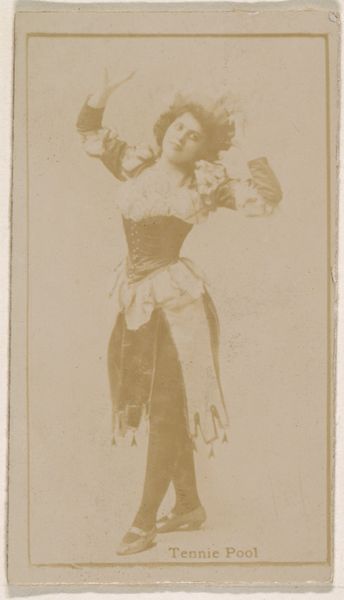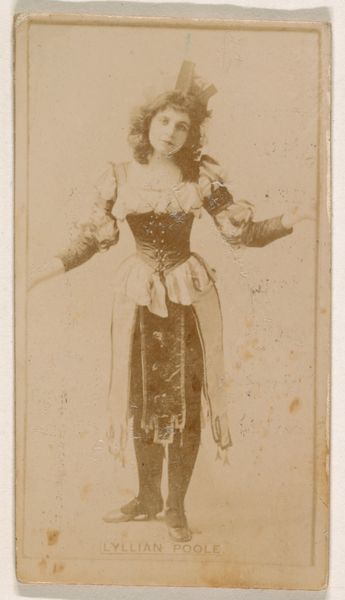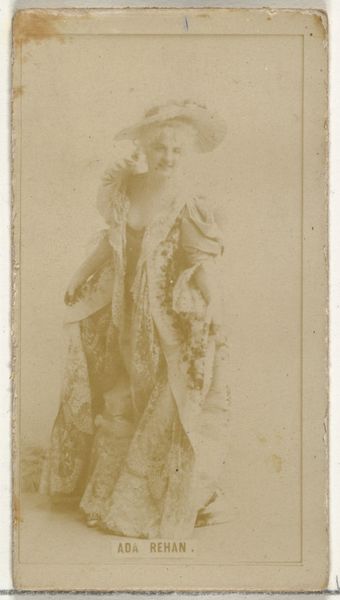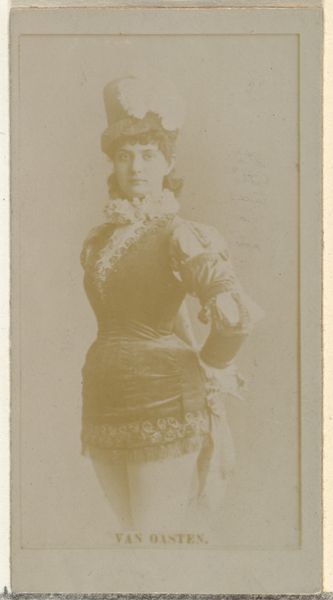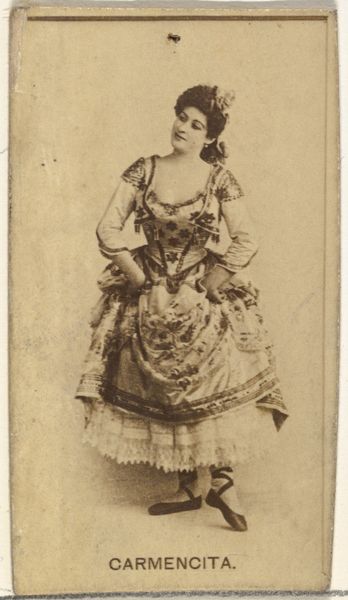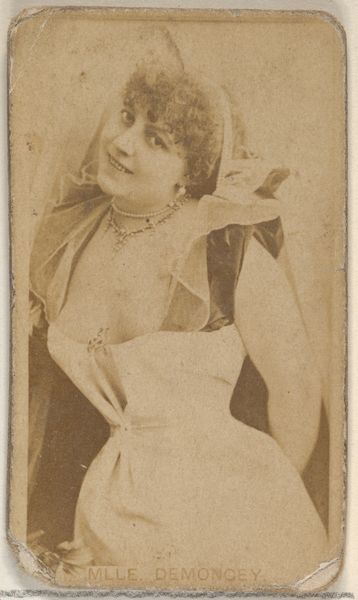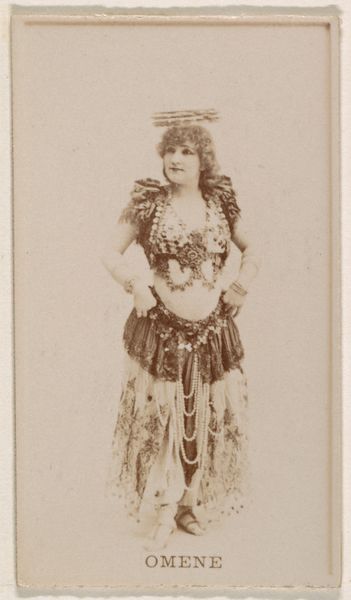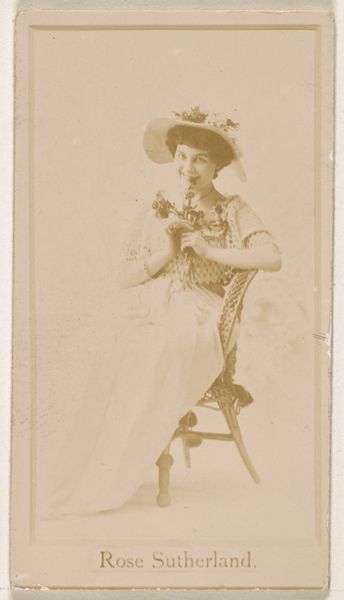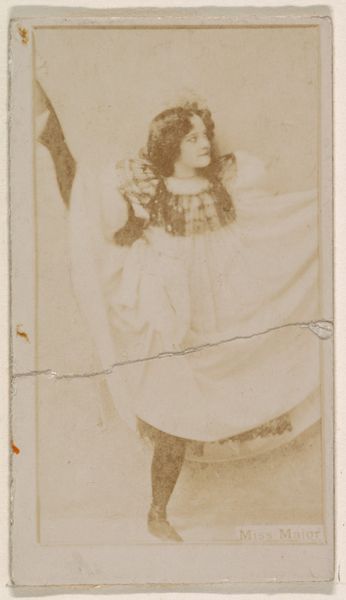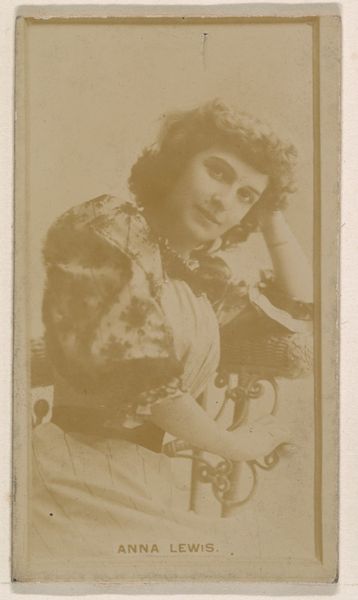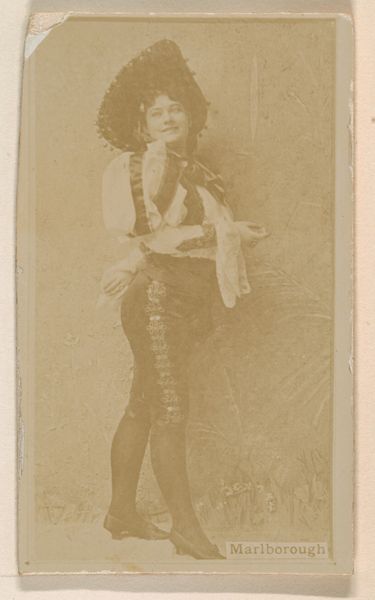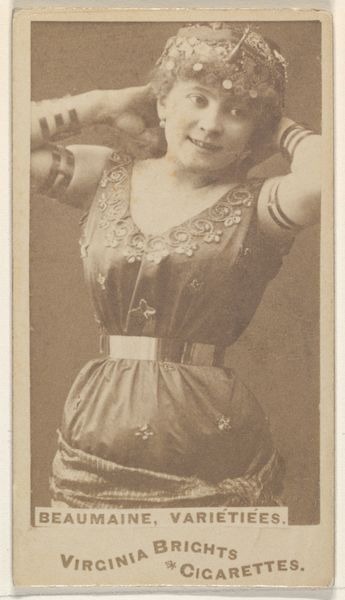
Lyllian Poole, from the Actresses series (N245) issued by Kinney Brothers to promote Sweet Caporal Cigarettes 1890
0:00
0:00
drawing, print, photography
#
portrait
#
drawing
# print
#
figuration
#
photography
Dimensions: Sheet: 2 1/2 × 1 7/16 in. (6.4 × 3.7 cm)
Copyright: Public Domain
Editor: Here we have a print from 1890 by the Kinney Brothers Tobacco Company titled "Lyllian Poole, from the Actresses series". It's fascinating to see an actress memorialized this way. I'm curious, what's your perspective on a piece like this? Curator: What's immediately striking is the very specific means of its distribution—a mass-produced image intended to promote Sweet Caporal cigarettes. It functioned as a commodity itself, circulated through the networks of the tobacco industry. Lyllian Poole's image became intertwined with the pleasures and habits associated with smoking. Think about that transaction: her likeness being traded for consumer loyalty. Editor: That’s an interesting point, it challenges the way we typically think about portraiture in a fine art context, right? The subject is now literally packaged for sale. Curator: Precisely. Consider the materiality of the print itself. It's a humble object, designed for ephemerality. What does it mean to see this photograph in a museum today? Does its presence here elevate the subject matter, the actress, or does it speak more about the evolution of commercial image production and the way performance, art, and advertising were interconnected? Editor: So, the art is almost in the context and the message about commerce, more than the image of the actress itself. Curator: Exactly. The photograph, a form of relatively new media at the time, enabled widespread dissemination. What labor went into producing these images, not just photographing Lyllian Poole, but printing, packaging, and distributing them? The exploitation of labor is often embedded in mass produced objects. What does this tell us about consumption in the late 19th century and beyond? Editor: That is quite eye-opening, looking past just the photograph and toward all the surrounding factors that came into play! I never would have thought of all those aspects. Curator: Seeing it from that manufacturing perspective reveals the intricate link between art, labor, and commodity culture, giving this otherwise simple portrait a deeper layer of significance.
Comments
No comments
Be the first to comment and join the conversation on the ultimate creative platform.
